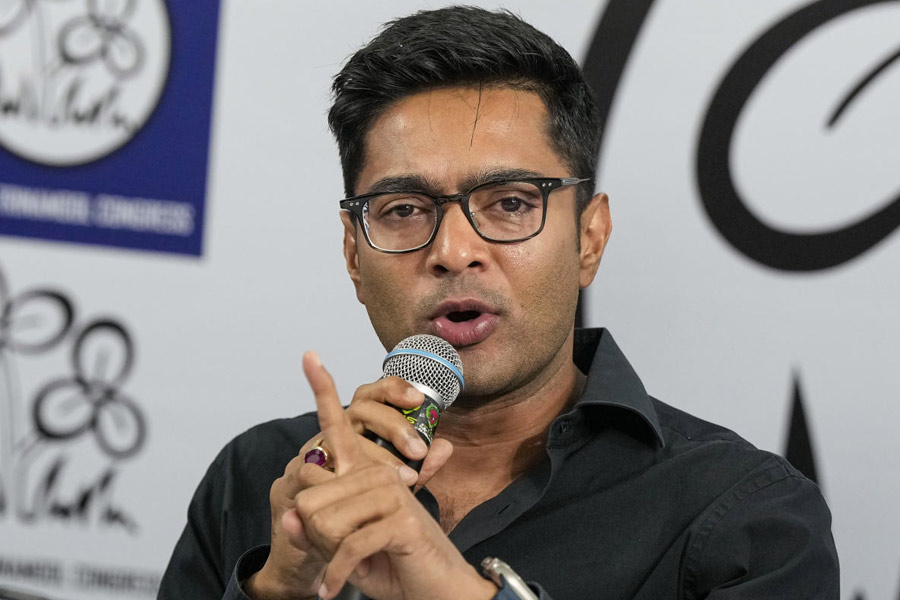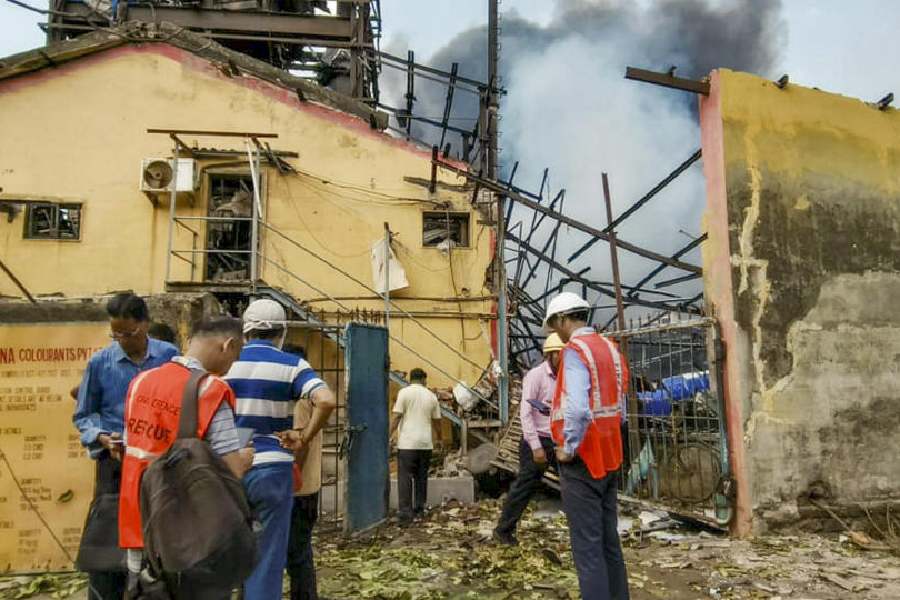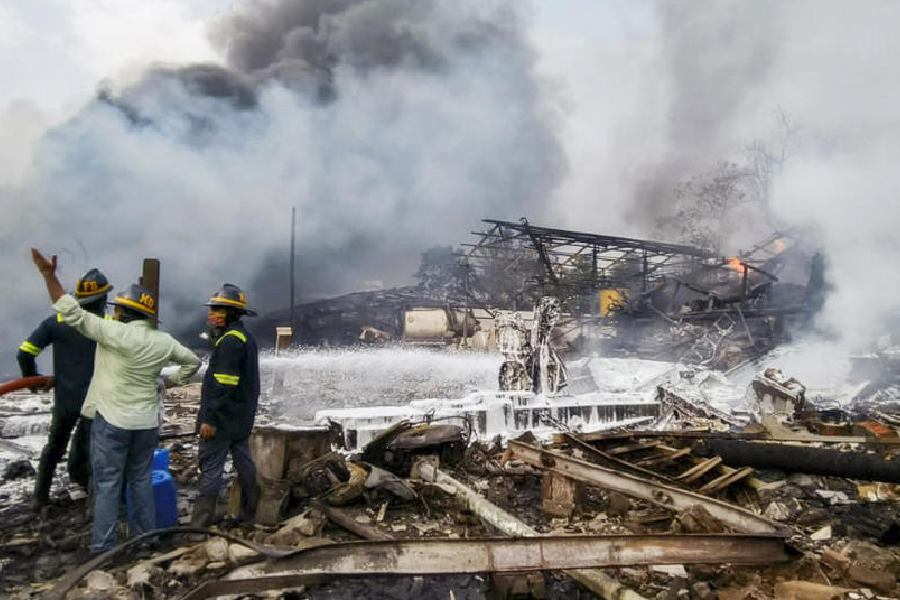Phantastischer realismus emerged as an art movement in the late 1950s in Vienna in the immediate aftermath of the Second World War. Much of the art was rooted in the traumatic experiences of the war, with the artists torn between wanting to portray these horrors and escape from them. The result was a unique blend of the fantastic and the realistic. This spirit of phantastischer realismus was captured in CIMA’s exhibition, Fantastic Realities and Beyond (on view at the gallery till August 3), which brought together artists who portrayed dreamlike visions from their subconscious with a touch of realism. It was a perfect conclusion to the gallery's 30th anniversary celebrations, coming after the three parts of 12 Masters, which painted a wide arc of the evolution of modern India and its art.
The sight that greeted viewers entering the gallery was the imposing, wall-to-wall piece, Barood (picture), by Kingshuk Sarkar with sounds of explosion ringing out from a process video playing next to it. Large, exploded splatters of black paint stood out like blood found at a crime scene and the canvas revealed debris upon closer inspection. This minimal but impactful work set the tone for the show by stimulating viewers to dig deeper to sleuth out the reality underlying the fantastic in the rest of the artworks. A keen eye, for instance, would be able to spot the pencilled shadow of a sword that lurks behind the protagonist of Dharmanarayan Dasgupta’s Violence or the cipher in Akhilesh’s We Are Thinking... of Black — the detailed hand-drawn tiles in complementary shades of blue and orange are mesmerising — or in V.S. Gaitonde’s ancient script. Seema Ghuraiya’s understated, yet layered, piece was striking and hid clues in plain sight, as did Mona Rai’s Nakshatra II. Gouri Vemula and Laxma Goud conjured up lush, idyllic worlds where the fruit of knowledge was not forbidden.
While Abir Karmakar’s sardonic but self-confident nude portraits look the viewers in the eye and dare them to be judgmental, Buku Sarkar’s Containment Diaries highlights the superfluity of the human body in two haunting photographs. Chittrovanu Mazumdar, on the other hand, lays out a body on a morgue stretcher, inviting the viewer to dissect it and look within the corporeal shell; Kashmiri Khosa, too, encourages an interrogation of the darkness at the core of the self in Introspection. The human body is not the only one under the artistic scanner; Mandakini Devi’s lenticular print, Naga Kanya, and Veena Bhargava’s Deva Dwar Series I explore mythical and divine forms, exposing how they shapeshift based on varied interpretations.
These bodies perhaps inhabit the many cities — real and imagined — that preoccupy the artists in this show. Shailendra Kumar’s archival print, Jalasen Ghat, captures a Varanasi where a sense of foreboding hangs heavy in the pitch-black sky, while Shreyasi Chatterjee captures the city in a very different mood in her detailed, pastel, embroidered landscape. Kusumlata Sharma reimagines Dwarka, while Swapnesh Vaigankar dreams of another abandoned townscape — each of these works had painstaking minutiae that were etched out in ink and added both visual and metaphorical depth. Sundarban to Sonarpur by Ankan Bandyopadhyay was delightful in the suburban details — be it the shadow of a tree cast in afternoon light or the tiles of divinity that are often stuck to the walls of houses — that it captured of somnolent, middle-class neighbourhoods. Satyaranjan Das, on the other hand, painted an eerie picture of a dystopia where natural resources like land, water and trees all came at a stiff premium.
Chintan Upadhyay was scathing in his indictment of overpopulation in the disconcerting sculpture, Cloud, while Pankaj Panwar’s Elephant on Fast Track exposed the sham of the discourse on conservation which puts man and not beast at its centre. But all such worries and concerns dissolve into the hypnotic silence of Shobha Broota’s Origin 128.

![Barood by Kingshuk Sarkar [CIMA]](https://assets.telegraphindia.com/telegraph/2024/May/1715387318_fantastical.jpg)








